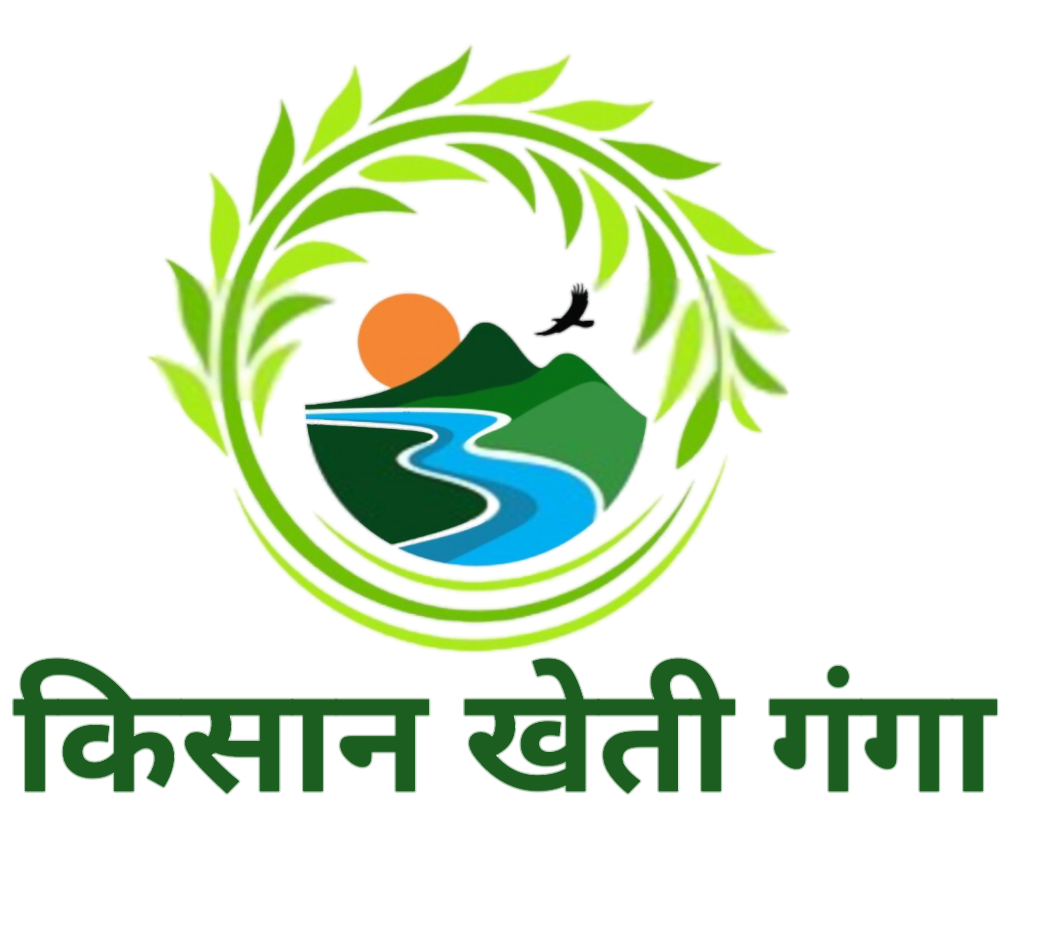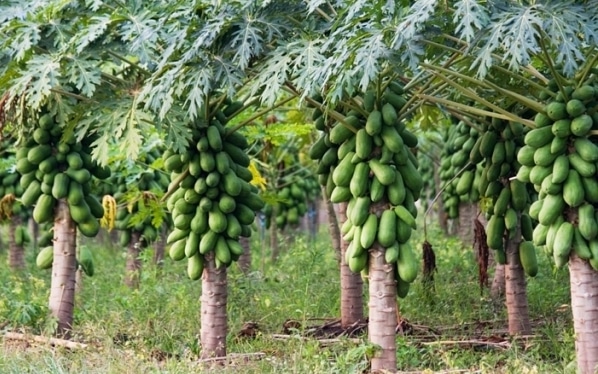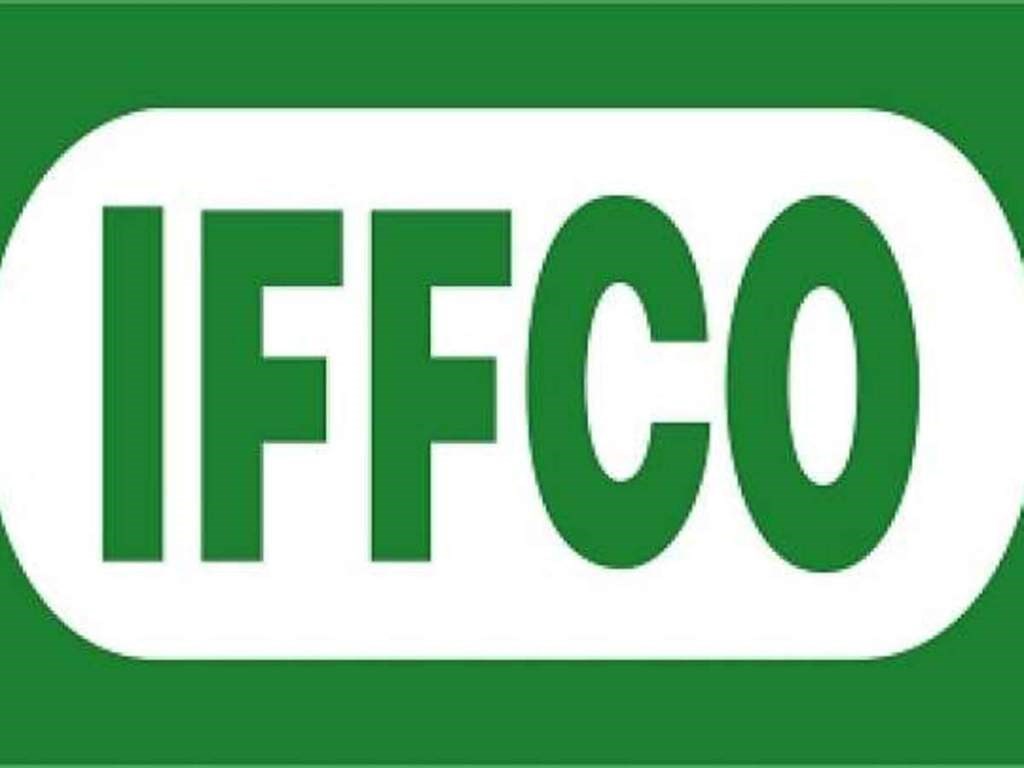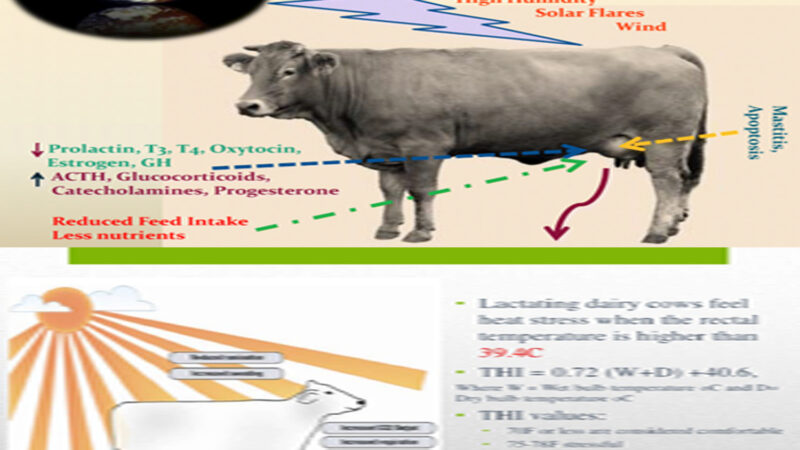High Density Papaya Plantation (PawPaw) in India
Papaya is one of the easiest crops to grow in India. It requires minimal maintenance and less water. It is very easy to grow and with the right nutrients, the profits are high. Papaya is also called papaw or papita. Due to its fast growth, high yield, long fruiting period, and high nutrient values it has become a popular fruit.
The Papaya tree is one of the commercially important crops that are cultivated in India. It holds importance due to its high medicinal properties and nutritional value. India is the largest Papaya producing country and it accounts for 46% of the total Papaya production in the world. The states of Karnataka, Andhra Pradesh, Maharashtra, Gujarat, Madhya Pradesh, and West Bengal are the major Papaya producing states in India.
Papaya is most popular because;
(1) Short duration
(2) High yield
(3) More income
(4) High palatability
(5) Continuous bearing
Papaya is a perennial fruit tree widely cultivated in tropical and subtropical climates for its nutritive properties and medicinal values. Papaya is grown for local and export markets. Total annual world production is approximately 6 million tonnes of fruits. India leads the world in Papaya production and other leading Papaya producing countries are Brazil, Mexico, Nigeria, Indonesia, China, Peru, Thailand, and the Philippines. High-density planting is efficient since it is precocious, easily manageable, has higher crop yield potential with better quality fruits and higher returns/unit area. It requires more capital to establish and is productive and profitable. Then, the adoption of high-density planting systems is revolutionizing fruit growing over much of the world and promises to have a significant effect on the horticulture industry.
High density planting is simply a term used for planting fruit-producing trees close to allow for more varieties in a small space.
A Step-by-Step Guide to High Density Papaya Plantation
Guide to High Density Papaya Plantation (Image credit: Pixabay)
Principle of High Density Papaya Plantation
- Higher early yield with best quality fruits through the planting of more number of nursery trees per unit area.
- High density planting makes the best use of vertical and horizontal space per unit time.
- Increased capture sunlight per unit area.
- Land use efficiency.
- Appropriate vegetative reproductive balance of the plants
- The balance between vegetative growth and fruiting i.e. grow fruit, not the trees.
- It has the maximum number of fruiting branches and the minimum number of structural branches.
- Training and pruning in such a way that each branch has minimum shade to others.
HDP is one of the recent novel ways of increasing productivity of both short duration and perennial fruit crops. Planting density is the most important factor which determines the yield of an orchard.
Important Components of High Density Papaya Plantation
The basic components of HDP are the use of dwarf scion varieties, planting system, Canopy management, dwarfing rootstocks and inter-stocks, efficient training and pruning, use of plant growth regulators, and suitable crop management practices. HDP comprise the planting of small tree densely, restricting their vegetative growth by using dwarfing rootstocks, or other horticultural methods like pruning.
The major components of high density planting system are;
- Planting Density – Even though a small canopy with a high number of well-illuminated leaves is efficient in photosynthesis but it is poor in light interception, which leads to low potential yield per hectare. Light interception can be improved by increasing tree density. Though, optimum tree density is the level of density and which is required to facilitate optimum light distribution and interception leading to high photosynthesis. As a result, crop yield per hectare is maximized. An optimum light interception is a factor of plant form, planting density, tree arrangement, and leaf response to light for the photosynthesis process. Optimum light interception can be defined as a level of light intercepted by an orchard system above or below which, the economic crop yield will be reduced.
- Planting Geometry – The planting system is a combination of both tree arrangement and plant form. Tree arrangement in HDP has sufficient alleyways for the movement of farm machinery. The way trees are arranged determines the light distribution pattern and light interception level.
- Pruning System – The training begins when the tree is first planted and continues throughout its productive life. Proper tree forms, branch angle and limb spacing in it aids in growth control. The main objective of pruning in high-density planting is to develop plant form which is good in light distribution, small in size, and easy to manage especially in terms of mechanization.
- Irrigation – Irrigation and fertigation have been identified as a factor for the success of high-density planting.
Varieties for High Density Papaya Plantation
Dwarf varieties of Papaya like Pusa Dwarf, PusaNanha, Red Lady 786, and Ranchi make it possible to grow Papaya under the HDP plantation.
Pusa Nanha – It is an extremely dwarf Papaya variety. Pusa Nanha Papaya is suitable for kitchen gardens, pot, and rooftop cultivation. This is ideal for high-density plantation.
Pusa Dwarf – It is a dwarf-statured dioecious variety with good crop yield. Pusa Dwarf Papaya fruits are medium-sized with an oval shape. It is a dioecious variety with dwarf Papaya plants and medium-sized (1 to 2 kg) oval fruits. Pusa Dwarf plant variety is suitable for high-density planting.
Papaya varieties are planted at a distance of about 2.5 m X 3 m or 2.5m X 2.5 m (1,333 to 1,600 plants/ha), while PusaNanha may be planted at a distance of 1.25 x 1.25m (6,400 plants/ha). Other Papaya varieties like CO-1, CO-2, Pusa Dwarf, and Honey Dew-1 are also suitable for high density planting.
Characteristics of High Density Papaya Plantation
Generally, high density planting gives higher yield as well as returns/unit area due to increasing the no. of trees/unit area. It is mainly possible by regular pruning and the use of bioregulators for maintaining the size and shape of the tree. The main characteristics of HDP are;
(a) Trees of HDP have a maximum number of fruiting branches and a minimum number of structural branches.
(b) Trees are trained with a central leader surrounded by nearly horizontal fruiting branches.
(c) Pruned occurs with canopy adjustment.
(d) The height must be according to the harvesting efficiency.
Advantages of High Density Papaya Plantation
- Induces precocity, increases crop yield, and improves fruit quality.
- HDP reduces labor cost resulting in low cost of production.
- Enables the mechanization of fruit crop production.
- Best utilization of land and resources.
- It gives a higher yield per unit area with quality fruits.
- It facilitates better utilization of solar radiation and increases in bearing surface per unit land area.
- HDP crops are easily manageable and fetch a higher return per unit area.
- High density planting has better amenability to modern, input saving horticultural methods.
- The use of dwarf trees and managing excessive vegetative growth gives higher productivity and harvest index as well as early economic returns.
- High density planting is more amenable to horticultural operations like pruning, plant protection measures, and harvesting which reduces the labor cost.
- HDP facilitates better utilization of solar radiation and increases the photosynthetic efficiency of the plant.
- It is amenable to modern inputs application methods like drip irrigation, fertigation, and mechanization, etc.
- Early economic returns.
The merit of HDP over Normal Planting;
The high density planting has certain definite benefits as well as limitations compared to conventional low-density planting. It is worth mentioning that under high density planting system the yield per plant is low as compared to low-density planting. Though, the total yield per unit area of land is several times higher than low-density planting. It appears to be the most appropriate method and to overcome low productivity and the long gestation period for early returns and export quality fruits.
Preparation of Soil for High Density Papaya Plantation
Clay soil is not recommended for Papaya farming. Sandy loam soil with no water retention is recommended and it does grow well in alluvial soil as long as there is no water retention. Papaya root must remain dry throughout its life to prevent root rot and fungal diseases. The pH level of the soil is to be between 5.5 and 6.5 and should be free from Lime. Light soil with proper manuring is found to be beneficial too. The usual practice in most commercial farms with high density Papaya farming is to make a raised bed with loose soil for up to 2-3 inches in height. The area is covered with mulching sheets and dotted with drip pipelines for watering the Papaya plants. After a while, the root will spread out and you will not need to worry if the raised bed flattens out. With the mulching sheets, you can be worry-free about weeds. There are practices where mulching sheets are not used. You could need to week 2-3 times till the plant grows to the desired height, usually around 2 feet tall after which you can stop weeding. If the plants are spaced out for more than 6 to 7 feet, small tillers can be used to till the land between the rows of plants. With higher density plantations this may be a concern, but weeds do not occur after the plant has reached a good height.
Propagation for High Density Papaya Plantation
- Using Old Tires In Garden – For Beginners
- Agriculture In Philippines -Farming, Major Crops
- Agriculture In Sri Lanka, Major Crops, Soil Types
- Pruning In Agriculture – Benefits, Tips, and Ideas
- Dairy Farming In Kenya – Business Plan
- Horseradish Farming – Cultivation In India
- Growing Spring Onions – Farming Tips, Ideas, Secrets
- Dairy Farming In Bangladesh – Business Plan
- Moth Bean Cultivation – Farming Practices In India
Papaya Tree (Image source: Pixabay)
This is done majorly through two ways;
- By seeds
- Vegetative i.e. by tissue culture
Papaya planting from seeds is the easiest, cheap and successful method. Papaya plants raised from seeds produce fruits of varied shapes, sizes, tastes, and colors, etc.
Vegetative propagation of Papaya using tissue culture can result in superior plants with certain traits, e.g., resistance to pathogen attack, and production of high yields, etc. However, this method is rarely used because it is expensive.
Methods of HDP – High density can be achieved by close planting which in turn is made possible through control of tree size or planting in a system that accommodates several crops. Manipulation of tree vigor is a very important prerequisite for the success of high density planting in any fruit crop. The high density of fruit orchards is achieved by controlling the size of the tree or through an improved planting system. Tree size can be controlled by applying different methods like;
- Use of genetically dwarf scion cultivars
- Use of dwarfing rootstocks and inter stock
- Training and Pruning
- Use of growth retardants
- Induction of viral infection
- Use of incompatible rootstock, and
- Use of genetically dwarf scion cultivars etc
Plant Spacing or Planting Distance in High Density Papaya Farming
A spacing of about 1.8 x 1.8 m. is normally followed. However higher density Papaya cultivation with a spacing of 1.5 x 1.5 m. /ha enhances the returns to the farmer and is recommended.
Closer spacing of 1.2 x 1.2 m. for cv. Pusha Nanha Papaya is adopted for high density planting, accommodating 6,400 plants/ha.
For Papaya high density plantation the pit size of 1 to 1.5 cubic feet should be dug at 1.2 x 1.2m and filled with 30-40 kg FYM with 25gm Aldrin 5 % dust will be added to the pits and filled with topsoil.
Planting Season and Planting Material in High Density Papaya Plantation
Papaya is planted during spring (February-March), monsoon (June-July), and autumn (October-November). Generally, Papaya is commercially propagated by seed and tissue culture plants. The seedlings can be raised in nursery beds 3meters long, 1meter wide, and 10 cm high as well as in pots or polythene bags. The seeds after being treated with 0.1% Monosan (phenylmercuric acetate), ceresin, etc. are sown about 1 cm. deep in rows 10 cm. apart and covered with fine compost or leaf mould. Light irrigation is provided during the morning hours. The nursery beds are covered with polythene sheets or dry paddy straw to protect the seedlings. About 15 to 20 cm. tall seedlings are chosen for planting in about 2 months.
Irrigation Requirement for High Density Papaya Plantation
The irrigation schedule is fixed based on the soil type and weather conditions of the planting region. Protective irrigation is provided in the first year of Papaya planting. During the second year, irrigation is provided at a fortnightly interval in the winter season and an interval of 10 days in summer. Basin system of irrigation is mostly followed. In areas having low rainfall, sprinkler or drip irrigation system can be adopted. The Papaya plant needs regular water for its rapid fruit development and yield. Irrigation must be given at weekly intervals during summer and once in 8-10 days during the winter season. During the summer months, the plants should be given 20-25 liters of water and can be gradually reduced to 10-15 liters of water/plant in winter.
Manuring and Fertilizers Requirement in High Density Papaya Plantation
The Papaya plant requires heavy doses of manures and fertilizers. Apart from the basal dose of manures (@ 10 kg/plant) applied in the pits, 200 to 250 g. each of N, P2O5, and K2O are recommended for getting a high yield. In Papaya Farming, the importance of nitrogen, phosphorous, and potassium for good plant growth and yield in Papaya has been realized. At the time of fertilization, a sufficient amount of moisture is essential in the soil. The fertilizers must be well mixed in irrigation rings or basins by a light digging or hoeing. Application of fertilizers must be stopped 6 months before harvesting the crop.
Pests and Diseases Management in High Density Papaya Plantation
The insect pests mostly observed in Papaya crops are fruit flies, aphids, red spider mite, stem borer, and grey weevil. In all cases, the infected plant parts need to be destroyed along with the application of prophylactic sprays of Dimethoate (0.3%) or methyl demeton (0.05%).
The main diseases in Papaya reported are powdery mildew, anthracnose, and damping-off, and stem rot. Application of wettable sulphur (1 g./l.) carbendazim/thiophanate methyl (1 g./l.) and Kavach/Mancozeb (2 g./l.) is effective in controlling the diseases.
Powdery Mildew – The disease appears on the foliage and pods. Infection is first apparent on the plant leaves as small slightly darkened areas, which later become white powdery spots. As soon as the disease symptoms are observed dusting Sulphur or spraying Calixin 75 EC at 15 days interval helps to control the disease.
Leaf- Blight – The disease causes severe damage to leaves and the disease first appears as small, discolored lesions, which are irregularly scattered on the leaves. These spots become irregular in shape, then increase in size, and appear brown to grey. This disease can be controlled by spraying of Dithane M-45 (0.2%) starting from the appearance of the disease symptoms.
Damping-Off – This is a disease of young seedlings. Well-drained soil must be used for planting and the crop should not be excessively irrigated. Before sowing the seeds must be treated with the fungal culture of Trichoderma viride (3-4 g/kg of seed) or Captan (3 g/kg of seed) to protect the newly emerging seedlings.
Papaya Mosaic – The disease attacks the Papaya plants of all age groups, but it is most serious in young plants. The aphids are responsible for transmitting the disease and the disease symptoms appear on the top young leaves of the plants. The infected plants show a marked reduction in plant growth. Good field sanitation like removal and destruction of affected plant reduce the spread of the disease.
Leaf Curl of Papaya – This Papaya disease is transmitted by the vector whitefly. Severe curling, crinkling, and deformation of the leaves characterize the disease. Mostly the young plant leaves are affected. Removal and destruction of the affected plants is the control measure to reduce the spread of the disease.
Harvesting Procedure of High Density Papaya Plantation
Papaya fruits are graded based on their weight, size, and color. A good crop may fail if harvesting of Papaya fruits is not done properly due to the perishable nature of fruits. The fruits must be left on the tree until they mature fully. Usually, the fruits are harvested when they are full size, light green with a tinge of yellow at the apical end. On ripening, fruits of certain varieties turn yellow but some of them remain green. When the latex ceases to be milky and become watery, the fruits are considered suitable for harvesting.
A Papaya fruit comes to bearing with 10 months after planting. However, economic life is only 3 to 4 years. Fruits are harvested when the fruit turns slightly yellow.
Yield in High Density Papaya Plantation
In case if you miss this: Organic Dragon Fruit Farming.
Yield of Papaya Fruit (Pic Source: Pixabay)
The yield of high density Papaya – Such high density orchards give 3 to 4 times higher yields i.e., 60 to 65 tonnes/hectare in comparison to the yield of the traditional orchards i.e., 15 to 20 tonnes/hectare with the superb combination of drip irrigation with dwarf varieties.
Commonly Asked Questions about High Density Papaya Plantation
Do Papaya trees need a lot of water?
The Papaya plant requires very little water compared to most plants. With Drip irrigation, each plant would require 6 to 8 liters of water. Too much water is not recommended for Papaya plants as it can cause root rot and nematode problems
How can I make my Papaya grow faster?
Right fertilization and soil conditions play a main role in the growth of Papaya plants. Too much water is not good and will shunt the Papaya plant growth. Loose sandy loom soil is better and with the right manuring, you can see growth in Papaya crops.
How do you increase Papaya production?
Here are some tips that will help you cultivate Papayas;
- The right way of watering
- Wind protection
- Manure and fertilizers
- Combating pests and diseases
Why is my Papaya tree not fruiting?
Papaya plants sometimes fail to fruit. This is not because the plant is unhealthy or undergrowth stress. It is a natural abortion of a female flower that had not been pollinated and then failed to develop into a fruit.
Is Papaya cultivation profitable?
Papaya cultivation is a highly profitable crop.
Why my Papaya leaves curling?
Papaya leaf curls disease caused by Papaya leaf curl virus. The main symptoms are the downward and inward rolling of top leaves and the thickening of veins. The leaves become leathery, brittle, and distorted.




